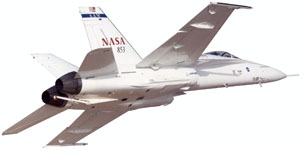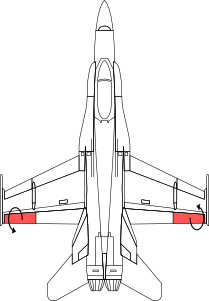Hello World!
This is the personal site of Daniel N. Miller. It’s a landing page for my software and publications. Check out my Linkedin page for a bio and job history.
Research
My research is on system identification, or the construction of dynamic models from measured data. I’m currently focusing on methods that robustly handle large datasets, such as those typically seen in structural and thermodynamic analysis. I’m also interested in robust control and control-oriented identification.
Academic Projects
These are some of the more fruitful projects I worked on in academia.
Identification of Aeroelastic Modes for an F/A-18

Many aircraft capable of reaching transonic speeds (between 0.7 and 0.9 times the speed of sound) suffer from some sort of reduced maneuverability in this part of the flight envelope. This is due to airflow separation over the ailerons, which control the roll of the aircraft. The ailerons are the outside, trailing-edge control surfaces shown below.

To investigate maneuverability of light-weight, flexible aircraft at transonic speeds , NASA Dryden FRC replaced the wings on an F/A-18 with a novel wing design that uses leading-edge control surfaces to actively modify the airflow across the wing surface. The change in airflow causes the wing to bend in a way that reattaches flow over ailerons. More information about the Active Aeroelastic Wing F/A-18 can be found on the plane’s Wikipedia page.
This project identified the aeroelastic modes of the Active Aeroelastic Wing F/A-18 for flutter analysis in collaboration with NASA researchers. In order to guarantee consistent estimates, the models were identified using statistical measures of input-output data. This resulted in the development of some novel ID methods and software tools that are currently being used in the aerospace industry. See the RBIS toolbox for some example methods and publications page for theoretical details.
Fault Detection in Integrated Circuits

The dynamic thermal response of integrated circuits is typically represented as a system of lumped time constants, and changes in these time constants imply attachment defects in the circuit. The standard way of detecting changes in time constants for ICs is to deconvolve the measured thermal step response with some time-domain shaping function and empirically compare the “spectra” of two responses. This can be problematic for noisy data, since the deconvolution operation can dramatically amplify high-frequency noise, decreasing the quality of the model.
Working with Vektrex in San Diego, we developed a novel method based on classical linear system realization theory to identify the time-constants of the thermal response of an integrated circuit for use in fault detection. The method provides parametric models of arbitrarily high order without deconvolution or differentiation. See the Stepalize software package for an implementation and check out the IEEE journal paper for theoretical details.